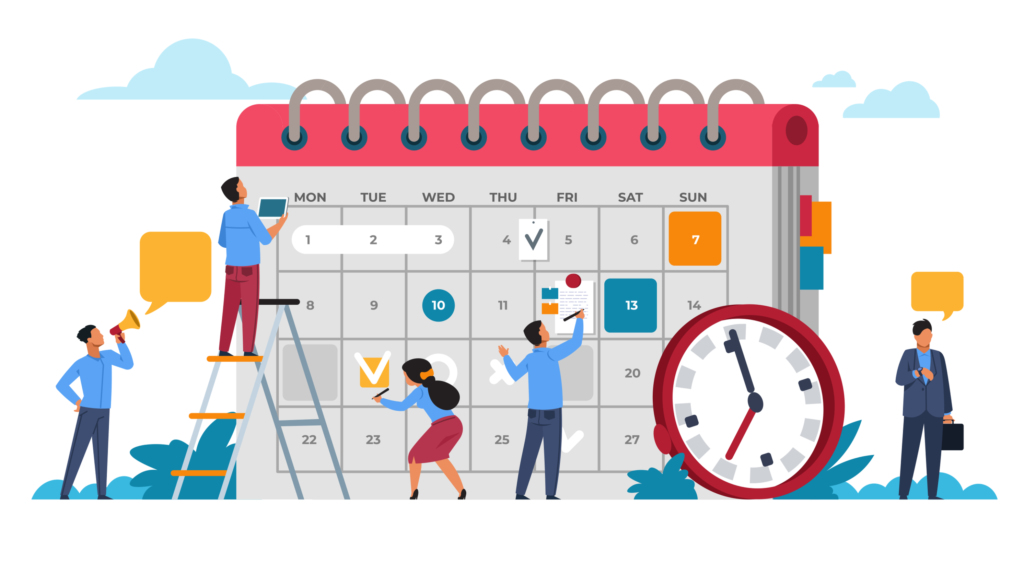Email deliverability can make or break your email program. When it’s thriving, you’re getting conversions, making deals, and communicating with your audience. When it’s not…well, it’s a stressful situation and disrupts your business.
The good news is you can fix and improve your email deliverability by implementing a few best practices. But, we must warn you; there’s not an overnight solution. It may take weeks, even months to repair. That’s why we recommend using these practices consistently if you want to avoid an email fallout.
But, before we jump into 5 best practices, let’s get into some basics.
What is Email Deliverability?
Email deliverability is the ability to send email to your subscriber’s inbox. It also means not landing in the spam folder and or being blocked from sending mail. Your deliverability is determined by your domain reputation and sending IP address health.
In short, you don’t want your reputation with the big Inbox Service Providers (Gmail, Yahoo, MSN) to be looked at as a spammer or associated with spammers when sending emails.
Signs Your Email Deliverability is Suffering

So how do you know if your deliverability is suffering? Well, for one thing, you won’t get an email or letter in the mail that says your email deliverability is suffering and needs to be fixed.
What usually happens for most is that you’ll notice a dip in your email open rates. And, if you are more advanced, then you may even notice a decline in your sender score (but more on that later).
When your email open rates consistently fall into the danger zone (anything below 20%), then it may be time to dig deeper into the root of the problem. A good first step is to see if your declining open rates are domain specific such as only on Yahoo.com email address or if it’s for everyone on your list.
Next, take a look at your sender score. Your sender score, much like a credit score, will be a good indicator of how your domain reputation and IP address health are perceived by inbox providers such as Gmail, Outlook, Proton Mail, and Yahoo. Your sender score can range from 0 – 100. A good sender score is anything 70 and above. If your score is lower than this, then you have some work to do.
Here are some tips on how to identify poor deliverability:
- Email open rates are consistently dropping below 20%
- Email open rates are dropping depending on the receiving domain (Example: You are used to seeing the Yahoo email addresses on your list have a 40% open rate. Suddenly, it starts dropping to 20%. You could have a deliverability issue with this ISP and not other ones such as Google.)
- Your sender score is below 70
On the bright side, there are free and paid tools available to monitor your deliverability rates, give insight into sending tips by providers and notify you of inbox placement.
Check Out These Inbox Monitoring and Marketing Tools:
- Google Postmaster – This is a great resource to send better emails to GMAIL.
- Yahoo’s Senders Hub – This is a great resource that provides insight into sending mail to Yahoo and AOL email addresses. (Did you know this is usually the 2nd highest volume of addresses after Gmail?)
- MSN’s Smart Data Network Service – A resource to help monitor your reputation for Outlook.com addresses.
- eDataSource – A paid tool that provides inbox placement data and other deliverability solutions
Now that you know what to look for, let’s dive into how to solve the problem.
Best Practices To Fix and Improve Your Email Deliverability
1.) Look at the Frequency of Your Sends

Low engagement is usually the main culprit of your poor deliverability. If your engagement is low, it could be due to the frequency and content of your sends. You may be sending too little, too much, not the right balance of content, or a combination of all of them.
Let’s say you are emailing your subscribers only once a month and are seeing low open rates. One solution is to add additional sends throughout the month that are value-driven content pieces. The primary goal here is to get them to open the email to drive up engagement rates. The solution: Create a new calendar, stick to the plan, and monitor the results.
Now, let’s change up the scenario. Let’s say you are sending heavy promotional-based emails three times a day. Your open rates and deliverability are starting to decline. To solve this, you could cut back on the frequency of sales-based sends and add in more value-driven content pieces to increase your engagement rates.
If the thought of cutting back on promotional sends worries you, then you could implement InboxMailers into your strategy. Inbox Mailers uses patent-pending technology that lets you send triggered sales emails immediately after someone opens an email. This new mailing technique works because you are not only sending a perfectly timed email (when someone is actively in their inbox) but, you are also sending them a sales-related email that coincides with your content. Many email marketers consider this new MarTech to be the secret sauce to increasing conversions and revenue. In fact, many even report seeing better open and click rates than traditional batch and blast sends.
Here’s another frequency scenario that could be affecting your deliverability. There could be an underlying issue with how new subscribers (or leads) are (or are not) interacting with your emails that are trickling down to everything else. One way to solve this is to create a nurture-based workflow that is value-driven to increase engagement. Again, the main theme here is to increase engagement across your sends.
There are many scenarios where your frequency may need to be adjusted to boost your engagement and improve deliverability. But, here’s our underlying solution: Take a look at your metrics, create a new sending schedule, and stick with it. Consistency is key here if you improve or fix your deliverability.
2.) Segment Your List
When your deliverability is suffering, it can be a sign that you’ve been emailing the wrong people. It’s time to audit your entire email list and see what’s happening and when.
Here are some things you may want to look at:
- Unsubscribe Rates – Does that happen with specific types of emails or around the same time in the customer journey?
- Soft and Hard Bounces – Are you cleaning your list to remove these email addresses before hitting send?
- Open and Click Rate Data – Do certain types of messaging increase your opens and clicks? Is there a timeframe when the subscribers usually can be considered “Closed Lost?”
- Spam Traps – Does your list contain any spam traps? If so, then remove those ASAP!
Once you’ve spent some time really analyzing your list, then it’s time to create some new audience segments. It’s best to focus on engagement criteria for these new segments.
Engagement segmentation is a critical component in improving your email deliverability. (It’s so important that we created a comprehensive guide to setting up your segmentation the right way will help improve your list health and deliverability.)
To start, create different audience segments based on how likely they are to interact with your content and send fewer emails to those who aren’t regularly opening and clicking.
There’s a very practical and technical reason to employ segmentation this way. If your open rate is in the danger zone (below 20%), the biggest way to increase engagement is to send your emails to people most likely to open and click them – rather than continuing to send generic emails to your entire list.
So, who is most likely to interact with your email content? Here are a few different segmentation strategies you can use to increase engagement rates:
- People who have opened or clicked on your content within the last 14 days
- Recent opt-ins or new subscribers
- New customers or people who have just made their first purchase
- Brand new leads you’ve recently advertised to
Pro Tip: For this to work, you have to give your subscribers ample opportunity to open and click. It’s best to send content or editorial emails on a regular basis so that they can engage with your emails.
3.) Content Matters
Do you like to be pitched 100% of the time? Well, neither do most people. An easy way to end up in the spam folder is by not providing enough valuable content to your list and communicating with them in a way that makes sense.
There are 3 types of emails you should be sending to your list: editorial, promotional, and transactional.
Editorial: This is a form of content marketing, designed to help, inspire, or entertain your readership. These are the emails your reader can’t get enough of: juicy industry trips, fascinating stories, or laugh-out-loud memes. These emails speak directly to your audience’s interests and issues.
These emails are incredible brand builders. They help your audience see you as an authority in your field or leader in your industry, which builds your “know, like, and trust” (KLT) factor.
And more importantly, this type of content marketing helps keep your IP and sending domain healthy, ultimately improving your email deliverability.
Promotional: This is usually a sales promotion, meeting request, or some type of conversion-oriented goal. These types of emails usually account for bringing in the most RIO from your email marketing strategy.
Transactional: This type of email is usually in response to a subscriber taken some kind of action. It can be a confirmation email for a new account sign up, delivering a requested asset (examples: ebooks, course, video link), or relates directly to a product/service they have purchased. These emails deliver on your promises to the subscriber.
Pro Tip: Balancing these 3 types of content into your strategy will help fix or improve your deliverability. Maybe you should have 2 editorial pieces and 1 promotional email per week. Test different cadences with your subscribers to see what works best for your audience.
4.) Write Non-Spammy Subject Lines
By now, you should have a better understanding that engagement drives your email deliverability. So let’s talk about how to get that engagement. The first step is to get them to open the email!
But, writing great subject lines is no easy task. They need to be catchy, intriguing, or sometimes just straight to the point about what’s in the email.
Here are some ideas to improve your open rates:
- Add personalization. If you know their first name, perhaps include it in the subject line.
- Ask a question that will resonate with them.
- Solve a problem they are having. You can start with “How to…”
- Intrigue their interest with a personal story
- Use a quote or a testimonial
- Make a list. Ie: 5 Ways, 6 Tips, 10 Hack For…
- Add an emoji or two
You can combine some of these ideas into one great subject line. Here’s an example: “Jim, is email deliverability keeping you up at night?” Or, ” 5 Ways to Improve Your Sleep Quality”
Now here’s what to avoid:
- Bland and boring copy that even you wouldn’t open
- Spammy words: Risk-free, free money, free leads. Just don’t.
- Anything that’s misleading and would raise some eyebrows…
Pro Tip: Don’t slack on the preview text either. The same do’s and don’ts apply here too.
5.) Increase Your Open Rates with Triggered Sends

There’s a new strategy that stealth marketers are implementing that lets you send triggered sends when someone is in the inbox – eliminating the guesswork of scheduling an email.
Using Inbox Mailer’s patent-pending technology, your ESP will be pinged when someone on your list has opened one of your emails. Once it sees this, you can trigger off an automated workflow to send another email campaign of your choosing. Your chances greatly improve getting that triggered email open for two reasons. Reason #1) They just read an email from you so they must be interested in what you have to say Reason #2) They are actively in their inbox – perfect timing if you ask us.
Combining marketing automation with human behavior can improve your open rates by up to 300%.
The other benefit? Getting that open with repeated subscribers will improve your engagement and (drum roll please…) fix or improve your email deliverability.
Putting It All Together
When you implement these 5 best practices into your email program, you can have a well-oiled email marketing, conversion-driven machine on your hands.
Free Guide to Increase Email Open Rates
Looking for more ways to generate higher open rates and improve click volume? Get our free guide, How To Double, Even Triple Your Email Open Rates, and unlock how mega-mailers optimize their email marketing efforts.
We even share how you can see open rates in the 50-70% range – without making any changes to your copy or subject lines.
Fortunately for you, this guide will help you learn all the things we had to learn through trial and error over the last 20 years in email marketing.



